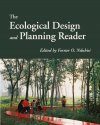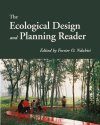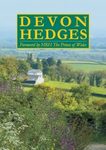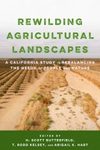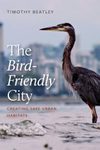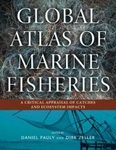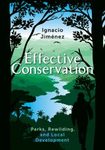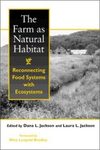About this book
From Henry David Thoreau to Rachel Carson, writers have long examined the effects of industrialization and its potential to permanently alter the world around them. Today, as we experience rapid global urbanization, pressures on the natural environment to accommodate our daily needs for food, work, shelter, and recreation are greatly intensified. Concerted efforts to balance human use with ecological concerns are needed now more than ever.
A rich body of literature on the effect of human actions on the natural environment provides a window into what we now refer to as ecological design and planning. The study and practice of ecological design and planning provide a promising way to manage change in the landscape so that human actions are more in tune with natural processes. In The Ecological Design and Planning Reader Professor Ndubisi offers refreshing insights into key themes that shape the theory and practice of ecological design and planning. He has assembled, synthesized, and framed selected seminal published scholarly works in the field from the past one hundred and fifty years – ranging from Ebenezer Howard's Garden Cities of To-morrow to Anne Whiston Spirn's, Ecological Urbanism: A Framework for the Design of Resilient Cities. The reader ends with a hopeful look forward, which suggests an agenda for future research and analysis in ecological design and planning.
This is the first volume to bring together classic and contemporary writings on the history, evolution, theory, methods, and exemplary practice of ecological design and planning. The collection provides students, scholars, researchers, and practitioners with a solid foundation for understanding the relationship between human systems and our natural environment.
Contents
Preface
Acknowledgements
Introduction
PART I: Historical Precedents
Introduction
Chapter 1. Henry David Thoreau, Walden1854. Reprint
Chapter 2. Georg P. Marsh, Excerpts from Man and Nature
Chapter 3. David Lowenthal, “New Introduction”, Man and Nature by George P. Marsh
Chapter 4. Ebenezer Howard, “The Three Magnets and Town-Country Magnet”, Garden Cities of To-morrow
Chapter 5. Patrick Geddes, Cities in Evolution: An Introduction to The Town Planning Movement and to The Study of Civics
Chapter 6. Benton MacKaye, “Regional Planning and Ecology”, Ecological Monographs
Chapter 7. Frederick Steiner, Gerald Young, and Ervin Zube, “Ecological Planning: Retrospect and Prospect”, Landscape Journal 7
PART II: Ethical Foundations
Introduction
Chapter 9. Ian L. McHarg, “Man and the Environment”, The Urban Condition
Chapter 10. Aldo Leopold, “The land ethic”, A Sand County Almanac, and Sketches Here and There
Chapter 11. Al Gore, “Introduction”, Silent Spring
Chapter 12. Rachel Carson, “The obligation to Endure”, Silent Spring
Chapter 13. Timothy Beatley, “Ethical Duties to the Environment”, Ethical Land Use: Principles of Policy and Planning
Chapter 14. Baird J. Callicott, Beyond the Land Ethic: More Essays in Environmental Philosophy
PART III: Substantive Theory
Introduction
Chapter 15. Catherine Howett, “Systems, Signs, Sensibilities: Sources for A New Landscape Aesthetic”
Landscape Journal
Chapter 16. Ian L. McHarg and Frederick Steiner, “Open Space from Natural Processes”, To Heal the Earth: Selected Writings of Ian L. McHarg
Chapter 17. Sim Van der Ryn and Stuart Cowan, “Introduction to Ecological Design”, Ecological Design
Chapter 18. Eugene P. Odum, “The Strategy for Ecosystem Development”, Science
Chapter 19. Richard T.T. Forman, “Foundations”, Land Mosaics: the Ecology of Landscapes and Regions
PART IV: Procedural Theory
Introduction
Chapter 20. Forster Ndubisi, “First Landscape-Suitability Approach”, Ecological Planning: A Historical and Comparative Synthesis
Chapter 21. John T. Lyle, “How Human Ecosystems Work”, Design for Human Ecosystems: Landscape, Land Use, and Natural Resources
Chapter 22. Virginia H. Dale, Sandra Brown, R. A. Haeuber, N. T. Hobbs, Nancy Huntley, R. J. Naiman, W. E. Riebsame, M. G. Turner, and T. J. Valone, “Ecological Principles and Guidelines for Managing The Use of Land 1”, Ecological Applications
Chapter 23. Richard T.T. Forman, “Basic Principles for Molding Land Mosaics”, Urban Regions: Ecology and Planning Beyond the City
Chapter 24. Jack Ahern, Elizabeth Leduc, and Mary L. York, “Introduction”, Biodiversity Planning and Design: Sustainable Practices
PART V: Methods and Processes
Introduction
Chapter 25. Ian L. McHarg, “An Ecological Method for Landscape Architecture”, Landscape Architecture
Chapter 26. Lewis Hopkins, “Methods for Generating Land Suitability Maps: A Comparative Evaluation”, Journal of the American Planning Association
Chapter 27. Kevin Lynch and Gary Hack, “The Art of Site Planning”, Site Planning
Chapter 28. Danilo Palazzo and Frederick Steiner, “Process”, Urban Ecological Design: A Process for Regenerative Places
Chapter 29. Carl Steinitz, “On Teaching Ecological Principles to Designers”, Ecology and Design
Chapter 30. William M. Marsh, “Framing Land Use: A System Approach”, Landscape Planning: Environmental Applications
Chapter 31. Forster Ndubisi, “A Synthesis of Approaches to Ecological Planning”, Ecological Planning: A Historical and Comparative Synthesis
PART VI: Dimensions of Practice
Introduction
Chapter 32. Arthur Johnson and Jonathan Berger, “A Case Study in Ecological Planning: The Woodlands, TX”, Planning the Uses and Management of Land
Chapter 33. Design Workshop, Inc. “Project Discussion: Aguas Claras, Belo Horinzonte”, Toward Legacy: Design Workshop’s Pursuit of Ideals in Landscape Architecture, Planning, and Urban Design
Chapter 34. Chris Mulder, “Foreword”, Thesen Islands
Chapter 35. Carl Steinitz, Hector Arias, Scott Bassett, Michael Flaxman, Tomas Goode, Thomas Maddock, David Mouat, Richard Peiser, and Allan Shearer, Alternative Futures for Changing Landscapes: The Upper San Pedro River Basin in Arizona and Sonora
Chapter 36. William S. Sanders, “Reinvent the Good Earth: National Ecological Security Pattern, China”, Designed Ecologies: The Landscape Architecture of Kongjian Yu
Chapter 37. Jie Hu, “From Regional Planning to Site Design: The Application of Shan-Shui City Concept in Multi-Scale Landscape Planning of New Cities in China”, International Federation of Landscape Architects (IFLA) World Congress
Chapter 38. David E .Miller, “Site Building Through Ecological Planning”, Toward A New Regionalism: Environmental Architecture in The Pacific Northwest
PART VII: Emerging Frameworks
Introduction
Chapter 39. Mathis Wackernagel and William Rees, “What is an Ecological Footprint”, Our Ecological Footprint
Chapter 40. Peter Calthorpe, “The Region”, The New Urbanism: Toward Architecture of Community
Chapter 41. Anthony Downs, “Smart Growth: Why We Discuss It More Than We Do It”, Journal of the American Planning Association
Chapter 42. Frederick Steiner, “Landscape Ecological Urbanism: Origins and Trajectories”, Landscape and Urban Planning
Chapter 43. Jianguo Wu and Tong Wu, “Ecological Resilience as a Foundation for Urban Design and Sustainability,” Resiliency in Ecology and Urban Design: Linking Theory and Practice for Sustainable Cities
Chapter 44. Anne Whiston Spirn, “Ecological Urbanism: A Framework for the Design of Resilient Cities”
Conclusion: Future Thinking and Practices
Notes
References
Copyright Information
Index
Customer Reviews
Biography
Forster Ndubisi is a Professor and head of the Department of Landscape Architecture and Urban Planning at Texas A & M University. A former President of Council of Educators in Landscape Architecture (CELA), he is the current Vice President for Research and Information for the Landscape Architecture Foundation (LAF) Board.







